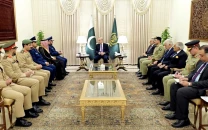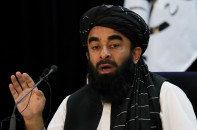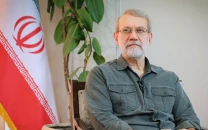Hating the hegemon
There are two types of military anti-Americanism. The first is Hamid Gul-ian. The second is Aslam Beg-ian.

In 2009, American journalist and writer Pamela Constable noted in Peshawar, after the Meena Bazaar explosion there, that the victims insisted the deed was not done by the Taliban. Anyone who watched TV would have come to the conclusion that the victims didn’t want to name the Taliban but implicitly pointed to mischief, jointly planned by the US and India.
So it is India, the schoolbook villain, acting together with the new villain, America. India is where military and civilian minds meet. The general thinks he has been short-changed by America, siding with India at crucial moments and abandoning Pakistan during conflict. The civilian mind is a prisoner of the textbooks written under the spur of Pakistani nationalism, seeking elusive internal cohesion by pointing to an external foe.
There is the Urdu-English divide to consider. Urdu scrutinises nationalism as its function of stocktaking; English scrutinises governance of the state. One focuses on the nuances of honour; the other on practicalities of survival and progress. The discourse of honour dominates in Pakistan. Urdu is the carrier of Pakistan’s ideology that equates Islam with hatred of India, the Jews and, increasingly, America; English expresses a more liberal, objective, and global understanding of Pakistan’s plight.
If there is an Urdu-English overlap, it is in favour of the Urdu opinion. English-language opinion hardly penetrates the Urdu press, unless a selective translation appears favouring the non-liberal view or expressing the liberal-Chomskyan world view.
There are two types of military anti-Americanism. The first is Hamid Gul-ian: It is based on religion and Quranic injunctions against Christians and Jews, and it applies to the West, while focusing particularly on America, the hegemon. The second is Aslam Beg-ian: It is based on a visceral hatred of India and a secular objection to America’s hegemonic high-handedness, including its opposition to Pakistan’s nuclear programme.
Hating the hegemon is historically confirmed. In every age a hegemon ensured the functionality of the global system. But its arrogance inspired the feeling of subservience among the lesser states. When the hegemon declined, its haters attacked it and pulled it apart. Yet what followed was global disorder, which lasted till a new hegemon appeared on the scene.
Disorder and trade disruption followed the destruction of the Roman Empire by Vandals and Visigoths. The Slav nations living under the hegemony of the Ottoman Empire finally got rid of it with the help of Europe and the Arabs, but the ensuing chaos was not remedied till the appearance of the British Empire. The failure of the post-colonial state in Africa, Asia and the Middle East, tells us that fallout from its fall is continuing.
This was followed by the competitive hegemonies of America and the Soviet Union. Pakistan leaned on America to fight its unrealistic wars and is now full of hatred because its narrow regional focus doesn’t gibe with America’s global vision. It now wants to liberate itself from this hegemonic subservience and replace America with its rising competitor, China. Pakistan was ideologically alien to America; China is equally stranger to its ideology.
The lodestar of Pakistani hatred is India and is military-driven. As Pakistan strays from the global system presided over by America, India is adjusting to it. China remains export-driven and avoids confrontation with America and India through trade which is the time-tested instrument of avoidance of war.
Published in The Express Tribune, February 20th, 2011.














COMMENTS
Comments are moderated and generally will be posted if they are on-topic and not abusive.
For more information, please see our Comments FAQ